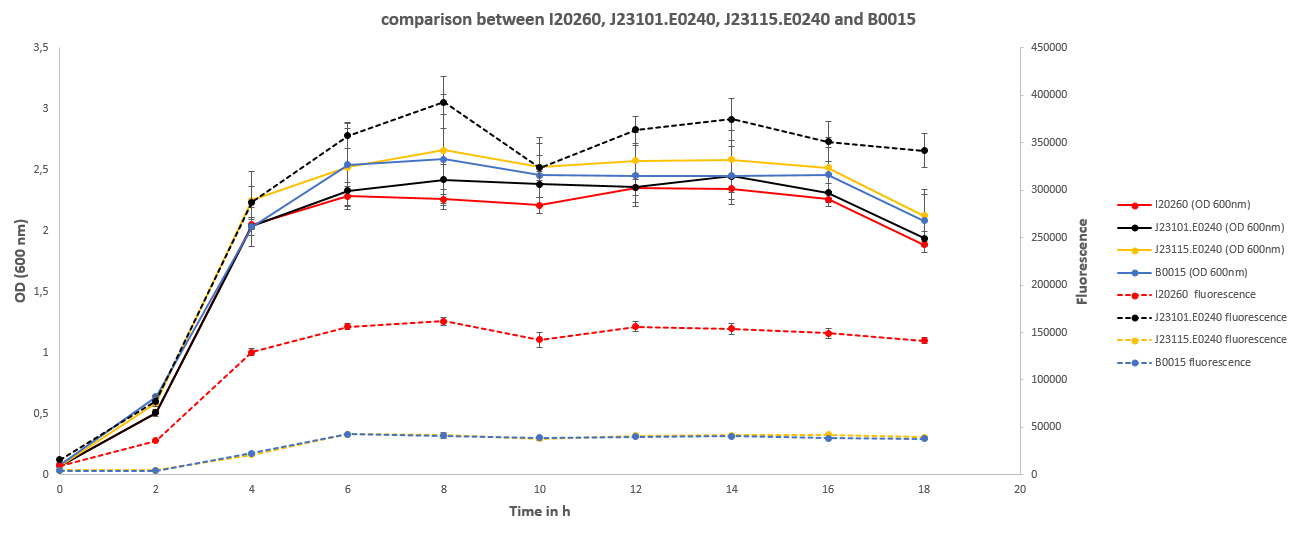Team:Aachen/Interlab Study
From 2014.igem.org
m (→Summary) |
(→Summary) |
||
| Line 4: | Line 4: | ||
==Summary== | ==Summary== | ||
| - | As our team is competing in the Measurement track for this year's competition, we were also required to participate in the [https://2014.igem.org/Tracks/Measurement/Interlab_study iGEM 2014 Measurement Interlab Study]. This study aims to collect data from iGEM teams all over the world on the fluorescence of three genetic devices expressing GFP. The devices differ in their plasmid copy properties and the strength of the promotor. | + | As our team is competing in the Measurement track for this year's competition, we were also required to participate in the [https://2014.igem.org/Tracks/Measurement/Interlab_study iGEM 2014 Measurement Interlab Study]. This study aims to '''collect data from iGEM teams all over the world''' on the fluorescence of three genetic devices expressing GFP. The devices differ in their plasmid copy properties and the strength of the promotor. |
| - | We introduced the three constructs into ''E. coli'' cells and measured fluorescence as well as optical density of the liquid cultures over a period of 18 hours, using a spectrophotometer and a plate reader, respectively. The obtained results confirmed our hypothesis that the fluorescence of the BioBrick in the high copy plasmid pSB1C3, J23101.E0240, would exhibit a stronger signal than the constructs I20260, which is on the low to mid copy plasmid pSB3K3, and J23115.E0240, which has a weaker promotor than J23101.E0240. During the experiment, we could observe a typical growth curve for ''E.coli'' including lag, exponential, stationary and death phase. We could show that the fluorescence we measured is rather a function of each cell than the whole culture, since all cultures had comparable optical densities. | + | We introduced the three constructs into ''E. coli'' cells and measured '''fluorescence as well as optical density''' of the liquid cultures over a period of 18 hours, using '''a spectrophotometer and a plate reader''', respectively. The obtained results confirmed our hypothesis that the fluorescence of the BioBrick in the high copy plasmid pSB1C3, J23101.E0240, would exhibit a stronger signal than the constructs I20260, which is on the low to mid copy plasmid pSB3K3, and J23115.E0240, which has a weaker promotor than J23101.E0240. During the experiment, we could observe a typical growth curve for ''E.coli'' including lag, exponential, stationary and death phase. We could show that the fluorescence we measured is rather a function of each cell than the whole culture, since all cultures had comparable optical densities. |
<center> | <center> | ||
Revision as of 15:45, 10 October 2014
|
|
|
|
|
 "
"
